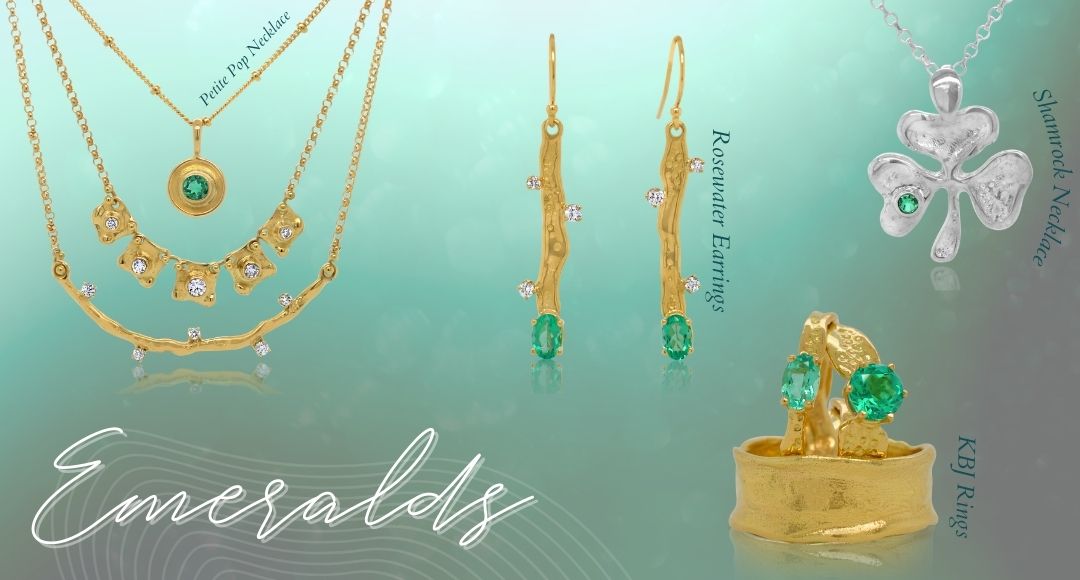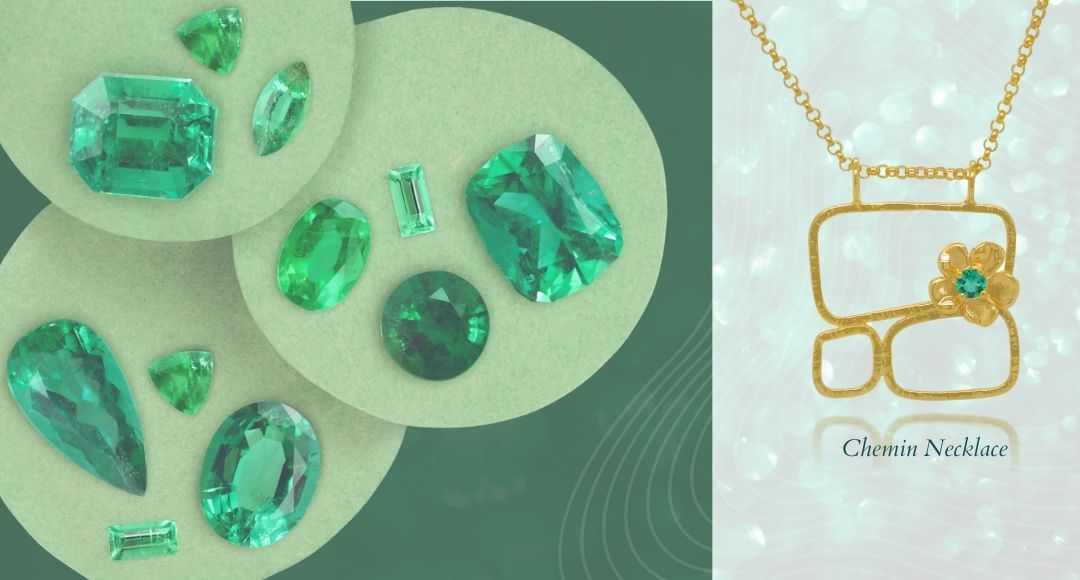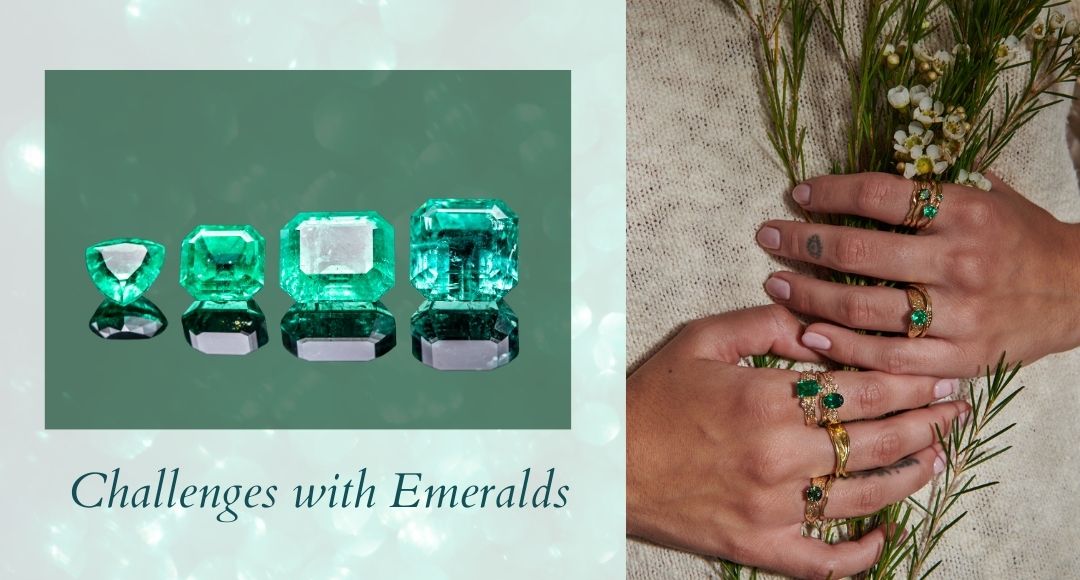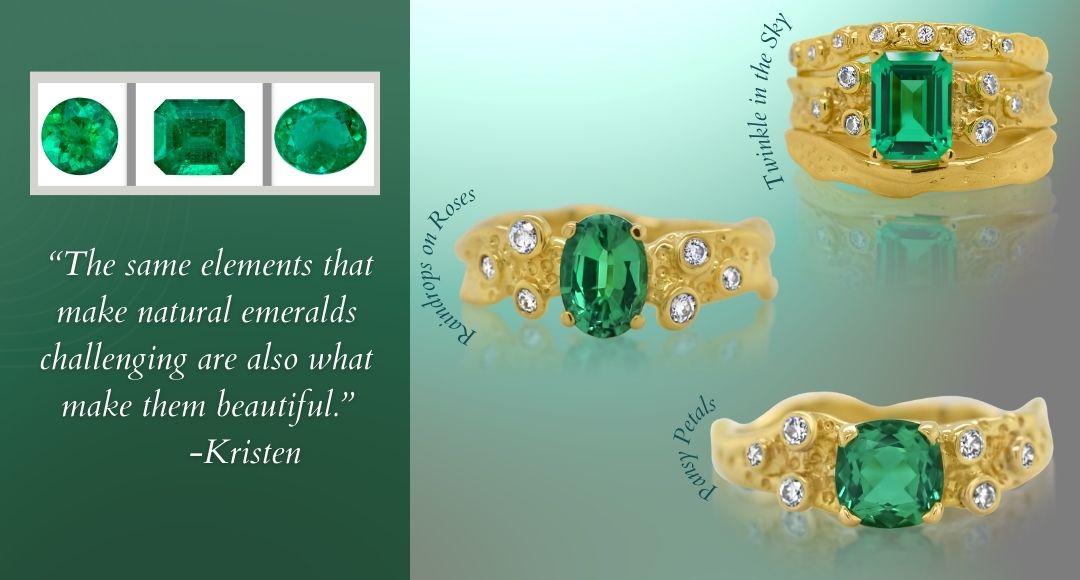
May’s birthstone is the elusive emerald. I say elusive because when it comes to natural stones, these are some of the most rare gems to find in nature and the most complicated to work with. Now, the majority of emeralds I incorporate into my designs are lab-grown, however, there is something special about a gem that has been formed so uniquely and weathered over time under the earth’s surface. (I love lab-grown stones for a ton of reasons. I won’t get into it now, but if you’re interested check out my lab-grown gems blog.) There is a reason why natural emeralds are so prized. To learn more, come with me on a journey to the Emerald City….
Where do emeralds come from?
Emeralds are a bright green variety of beryl. They can be found in Zambia, Columbia, Afghanistan, and Brazil, and have been recently discovered in Ethiopia. Wherever they are found, they are renowned for their captivating color, which ranges from a soft shamrock green to the deepest forest moss.
What sets emeralds apart?
Aside from their color, emeralds are an extremely soft stone. This differentiates them from other precious stones like diamonds, sapphires, and rubies. It also contributes to many of the challenges that come with natural emeralds. When beryl grows in the earth, water and other natural materials become mixed in with it, leading to cracks, crevices, and crystals inside the stone. This means that natural emeralds will have many more inclusions (or things inside the stone) than other precious stones. It’s next to impossible to find a natural emerald that does not have any inclusions.

The Jardin, Fissures, and Fractures
The mixture of inclusions, made from gas, water, and minerals, is called the jardin. This is the French word for garden, named for the moss or plant-like patterns inside most natural emeralds. The most common elements in the jardin are fissures and fractures, basically just cracks on the inside of the emerald. To increase clarity, most emeralds are treated with oil to fill the cracks. Natural emeralds are ranked based on having minimal oil, moderate, or heavy oil.
The larger the stone, the more likely it is to have more inclusions and a more complex jardin. Conversely, it is easier to find smaller emeralds with more clarity. Finding a large natural emerald with both clarity and structural integrity is a challenge indeed!
Challenges of Working with Emeralds

When cracks and fissures reach the surface of a gemstone, it becomes fragile. Emeralds are infamous for cracking, chipping, or even shattering completely. This makes the process of setting emeralds extremely delicate. It’s also important to know exactly how much oil or stabilizer a particular emerald has been treated with. If there are a lot of fissures that are not visible, it is all the easier to break the gemstone.
When selecting a natural gemstone, it’s important to choose stones with a thick girdle (the vertex at the corner of the crown and pavilion) and pavilion (the lower part of the stone.) The stone should be nice and deep so it is easy to set.
The Beauty of Natural Emeralds

Unsurprisingly, some of the same elements that make natural emeralds challenging are also what make them beautiful. The jardin is a unique and beautiful pattern that won’t be found in a lab-grown stone. Similarly, it is the very rareness and delicacy of emeralds that led to them becoming so prized in the first place.
More than anything, though, it is the mesmerizing color that makes emeralds special. People have always been drawn to them, and as long as I’m making jewelry I will continue to adore the elusive emerald!

